- Ph: (631) 801-2855
- All Visits by Appointment Only
- info@linatives.com
- My Account
Planting flowering ornamental trees in your landscape can add beauty and color to your garden throughout the year.
Blossoming trees like the Eastern Redbud and the Flowering Dogwood are native species that thrive well in various climates and can make your garden look spectacular.
These trees not only provide stunning flowers but also offer habitat for pollinators like bees and butterflies, enhancing local biodiversity.
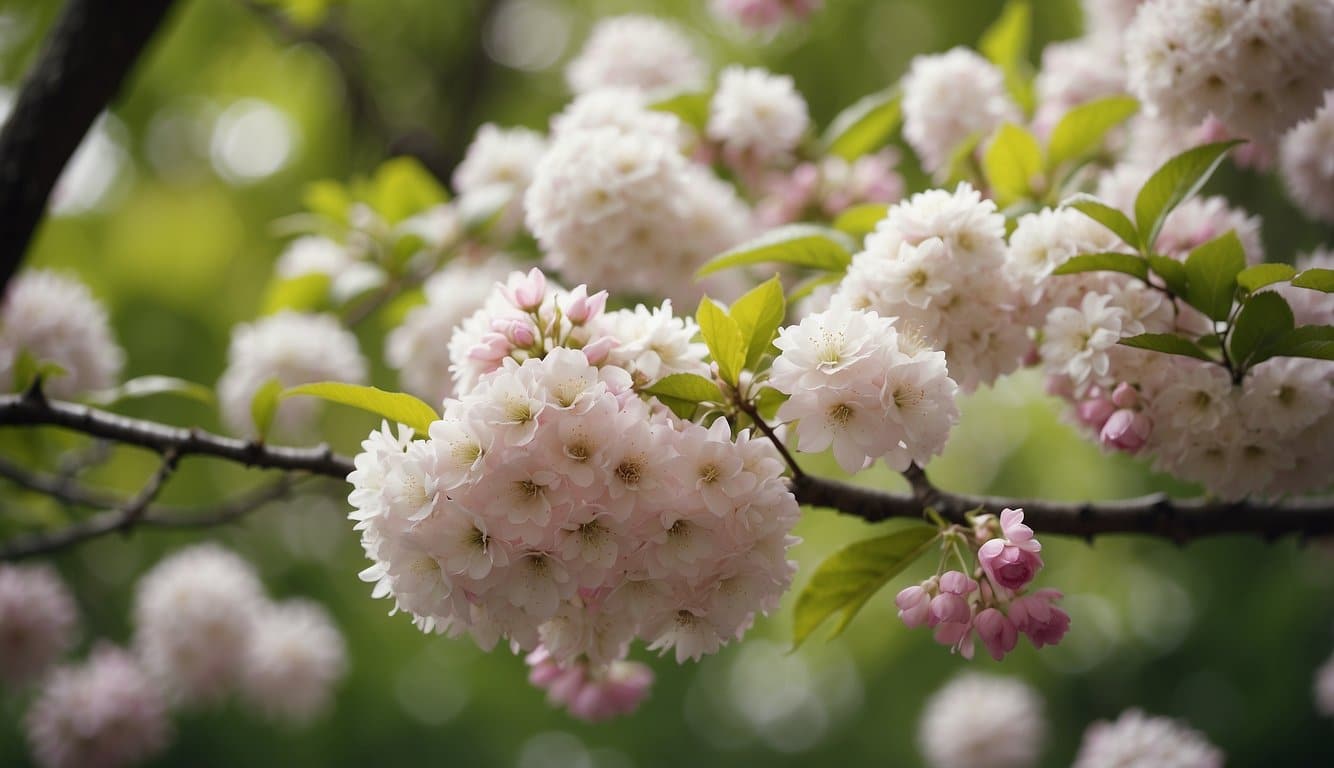
For a native alternative with similar charm, consider planting the Serviceberry, which is equally captivating and better suited for local wildlife.
Adding trees like these can create a visually appealing and environmentally friendly outdoor space.
By choosing the right flowering ornamental trees, you can transform an ordinary garden into an extraordinary one.
Whether you opt for natives like the Fringetree or the Tulip Tree, your choices will contribute to a vibrant and thriving landscape.
Flowering ornamental trees add a splash of color and elegance to landscapes and gardens. They play a significant role in landscape design and come in various types, each with unique features and care requirements.
Flowering ornamental trees are trees that bloom with flowers.
These trees are usually small to medium in size. They are planted mainly for their visual appeal rather than for shade or fruit.
Their beautiful blooms can transform a garden or landscape with bright colors and pleasant fragrances.
In landscape design, these trees act as focal points or accents.
They enhance the aesthetics of a garden, making it more inviting.
They are often used along pathways, as standalone features, or in clusters to create visual interest. Trees like dogwoods and eastern redbuds are excellent choices for this purpose.
Many varieties of flowering ornamental trees exist. Some popular choices include the Sweetbay Magnolia and the American Fringe Tree.
A good native alternative is the Eastern Redbud (Cercis canadensis), which showcases beautiful pink flowers too and is perfect for North American landscapes.
The American Fringe Tree (Chionanthus virginicus) features white, fringe-like flowers and is native to the US.
Another notable tree is the Magnolia (Magnolia spp.), offering large, fragrant blooms. The native Sweetbay Magnolia (Magnolia virginiana) can substitute non-native varieties and fits well in sunny or partially shaded gardens.
When choosing trees, factor in your local climate, soil type, and available space for the best results.
Selecting the right flowering ornamental tree involves understanding your climate, soil, and sunlight needs.
Climate and hardiness zones are vital when choosing an ornamental tree.
USDA hardiness zones help you determine which trees will survive the winter in your area.
For example, if you live in zone 5, look for trees like the native Dogwood (Cornus florida) which can thrive in colder climates.
Climate affects the health and growth of your tree.
In warmer zones, consider trees like the native Eastern Redbud (Cercis canadensis) for blooms and adaptability.
Check your local hardiness zone map before making a decision. This ensures the tree will endure seasonal changes and annual weather patterns in your garden.
Soil type and pH levels are essential for a healthy tree.
Test your garden soil’s pH to see if it’s acidic, neutral, or alkaline.
Different trees require different soil types.
Sweetbay Magnolia (Magnolia virginiana) thrives in rich, well-drained soil and produces beautiful, fragrant flowers, making it an excellent native choice.
Amend your soil if needed to match the tree’s requirements.
This might involve adding lime to raise pH or sulfur to lower it.
Proper soil preparation helps your tree establish strong roots and thrive.
Sunlight and shade are crucial for tree health.
Determine how much sunlight your garden receives daily.
Some trees need full sun (6+ hours), while others thrive in partial shade (3-6 hours).
Black Cherry (Prunus serotina) thrives in full sun and supports local wildlife, making it a great native alternative for ornamental and ecological value.
If your garden is mostly shaded, consider the Dogwood (Cornus florida), which can thrive in partial to full shade. This tree provides beautiful flowers and is native to many parts of North America.
Flowering ornamental trees offer beauty and interest throughout the year. Their appeal changes with the seasons, providing something to enjoy in spring, summer, autumn, and winter.
In spring, ornamental trees burst into vibrant bloom.
Many species, like the native Eastern Redbud (Cercis canadensis), produce striking pink flowers.
Serviceberry (Amelanchier laevis) is a native tree that produces delicate white flowers in early spring and provides seasonal interest along with benefits for local wildlife.
Dogwoods (Cornus florida), another native choice, display both pink and white flowers.
These trees are not only beautiful but they also attract pollinators like bees and butterflies.
Flowering begins as the last frost ends, creating a colorful display that heralds the arrival of warmer weather.
During summer, the focus shifts from flowers to foliage.
Trees like the native Sweetbay Magnolia (Magnolia virginiana) keep their green leaves and creamy white flowers well into the season.
American Smoketree (Cotinus obovatus) is a native option that offers striking, smoky-pink plumes in summer and brilliant fall foliage for multi-season interest.
These trees add vivid greens and bursts of flowers, while also providing shade.
Autumn brings a transformation in leaf color and fruit.
Maple trees, such as the native Red Maple (Acer rubrum), showcase red and orange leaves.
Black Tupelo (Nyssa sylvatica) is a native tree known for its stunning fall color, often displaying golden tones along with vibrant reds and oranges.
The Flowering Dogwood features red fruit that attracts birds.
Trees like the native Sassafras (Sassafras albidum) also change leaves to purple and red, providing a rich display of autumn colors and textures.
Even in winter, ornamental trees have much to offer.
Trees like the native American Holly (Ilex opaca) maintain their green leaves and red fruit, creating a festive look.
River Birch (Betula nigra) is a native tree known for its attractive peeling bark in shades of cream to reddish-brown, adding year-round visual interest.
Southern Magnolia (Magnolia grandiflora) is a native evergreen tree that retains its broad, glossy green leaves year-round, adding structure and greenery to winter landscapes.
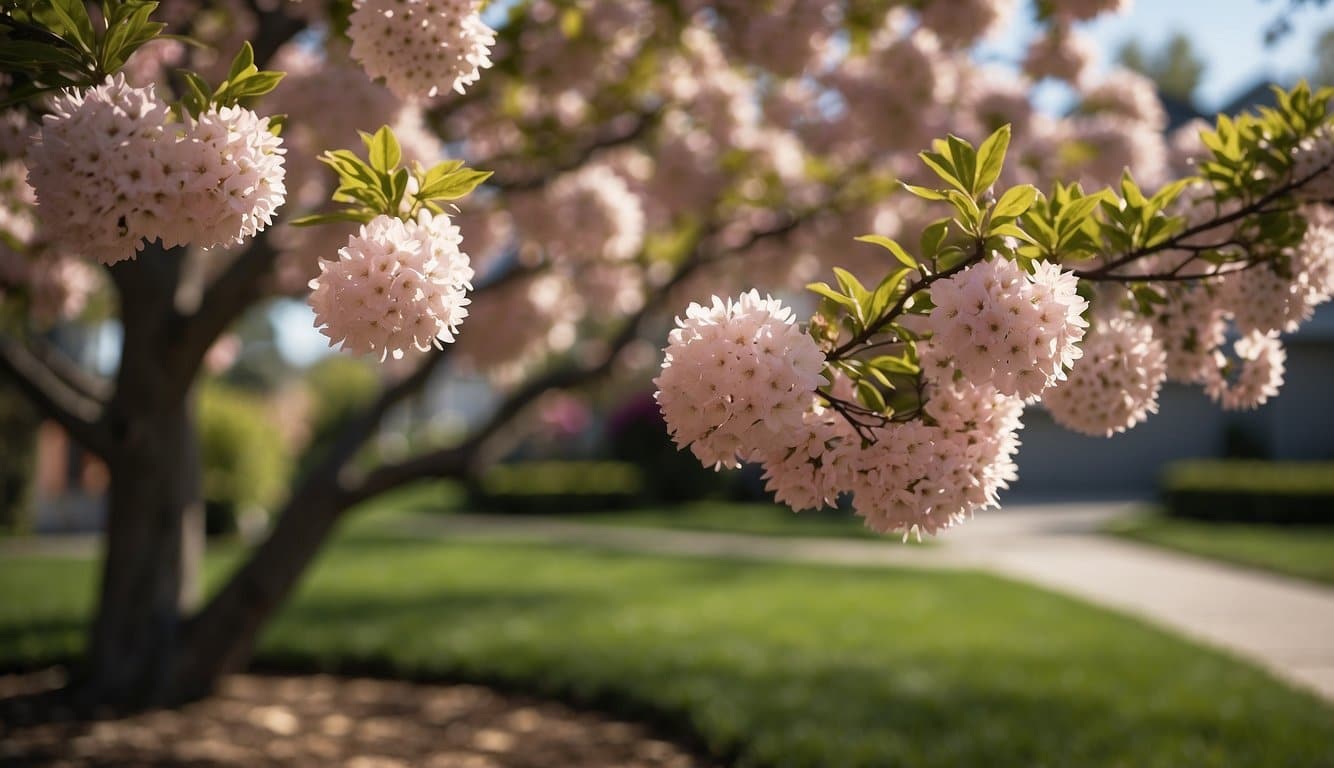
Flowering ornamental trees offer beauty to any landscape. To care for these trees, you need to understand their growth patterns, canopy spread, and how to maintain their foliage and flowers through proper pruning.
Flowering ornamental trees can vary widely in size.
Some native trees, like the Eastern Redbud (Cercis canadensis), can grow up to 30 feet tall. For a slightly smaller option, Serviceberry (Amelanchier spp.) typically reaches 15 to 25 feet and offers beautiful spring blooms and fall color.
Height and spread are essential considerations. Mature trees need space to ensure healthy growth. Planning the right tree for the right spot minimizes future maintenance challenges.
The canopy spread and form contribute to a tree’s aesthetic and practical value.
The Flowering Dogwood (Cornus florida), a native species, features a wide canopy that can spread 20–30 feet, providing both shade and wildlife habitat.
Some native ornamental trees have rounded crowns, while others display a more upright or layered form, influencing how much space they’ll need as they mature.
The Hawthorn (Crataegus phaenopyrum) is another valuable native tree, offering a graceful spread, white spring blooms, and structural interest throughout the year.
The Tulip Tree (Liriodendron tulipifera), a native species, features large, tulip-like flowers in spring and distinctive, uniquely shaped leaves that add visual appeal.
Leaves can vary in shape, size, and color, adding to the visual interest.
Sassafras (Sassafras albidum), another native tree, offers uniquely shaped leaves and vibrant fall colors, making it an excellent choice for a variety of landscape designs.
Proper pruning and care are vital for the health and appearance of flowering ornamental trees.
Pruning should usually be done in late winter or early spring before new growth starts. Remove any dead or diseased wood first.
Regular maintenance includes watering, mulching, and fertilizing. This ensures the trees remain healthy and vibrant.
For example, Serviceberry (Amelanchier spp.), a native tree, benefits from annual pruning to maintain its shape and encourage healthy flower production.
You will learn about various flowering trees, key features, growth habits, and native alternatives to enhance your garden.
Magnolias are known for their large, fragrant blooms.
The Southern Magnolia (Magnolia grandiflora), native to the southeastern U.S., features striking white blossoms and glossy evergreen leaves.
Another excellent native option is the Sweetbay Magnolia (Magnolia virginiana), which thrives in moist soils and produces creamy white, lemon-scented flowers.
While many ornamental cherry trees are non-native, Black Cherry (Prunus serotina) is a native species that supports local wildlife. It produces clusters of small white flowers in spring and dark berries that attract birds.
The Flowering Dogwood (Cornus florida), native to eastern North America, is known for its white or pink bracts and red berries. It attracts birds and provides stunning spring displays.
The Pagoda Dogwood (Cornus alternifolia), another native species, has layered branches and creamy yellow flowers, making it a great garden choice.
For a native alternative, try the Fringe Tree (Chionanthus virginicus), with fragrant white flowers.
The Eastern Redbud (Cercis canadensis) is a native tree with heart-shaped leaves and bright pink or purple flowers.
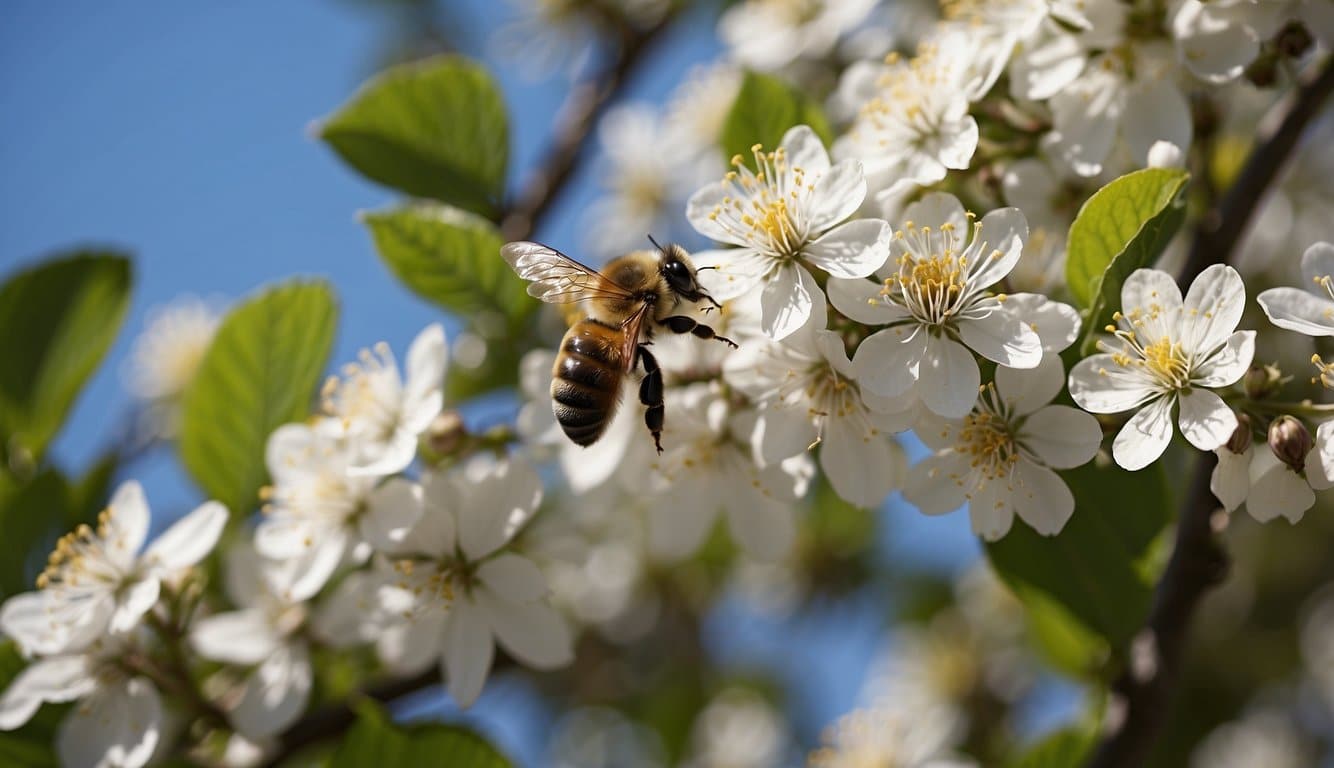
Flowering ornamental trees greatly benefit wildlife and the ecosystem. They attract many species, support pollination, and contribute to biodiversity.
Flowering trees like dogwood draw pollinators.
Bees and butterflies visit these trees for nectar. This helps in the pollination of other plants.
When bees and butterflies are more active, your garden flourishes.
Birds also favor these trees. They consume fruits and seeds, and find shelter in the branches.
For example, the Eastern Redbud, a native species, attracts both pollinators and birds.
If you prefer a non-native option like the Japanese Cherry, consider the native Serviceberry instead for similar benefits.
Flowering ornamental trees play a vital role in the ecosystem. They provide food and habitat for various wildlife.
Squirrels and other small mammals depend on these trees for nuts and seeds.
These trees also support soil health. Their leaves add organic matter when they fall and decompose. This enhances soil fertility.
Additionally, the roots help prevent soil erosion, keeping your garden healthier.
A native option like the Flowering Dogwood helps sustain the local ecosystem.
If you prefer a non-native species like the Callery Pear, try the native American Plum as an alternative.
Flowering trees add color, privacy, and versatility to landscapes. Key elements to consider include focal points, privacy, and container planting.
Flowering trees can be the centerpiece of your garden.
For a native choice, the Eastern Redbud (Cercis canadensis) offers bright purple-pink blooms in early spring and adds vibrant seasonal color.
These trees draw the eye and provide seasonal interest.
Position ornamental trees near patios or pathways to highlight walkways or seating areas.
A single flowering tree can transform a dull space into a vibrant area. Utilize contrasting textures and colors to enhance visual appeal.
Flowering trees offer beauty and privacy.
Planting a Magnolia can screen unwanted views while delighting with its large blooms.
If seeking a native option, the American Holly is an excellent alternative, providing year-round screening with its evergreen leaves and small white blossoms.
Space trees strategically along property lines or near windows for maximum effect.
Rows of flowering trees not only block views but also add a decorative touch.
Trees in containers are perfect for patios or small spaces.
For a compact tree with ornamental value, try the native Serviceberry (Amelanchier spp.), which offers white spring flowers and edible berries that attract wildlife.
Containers allow for flexibility in design.
Move trees to different spots as needed or rearrange them to match seasonal changes. Ensure the containers have good drainage to keep the trees healthy.
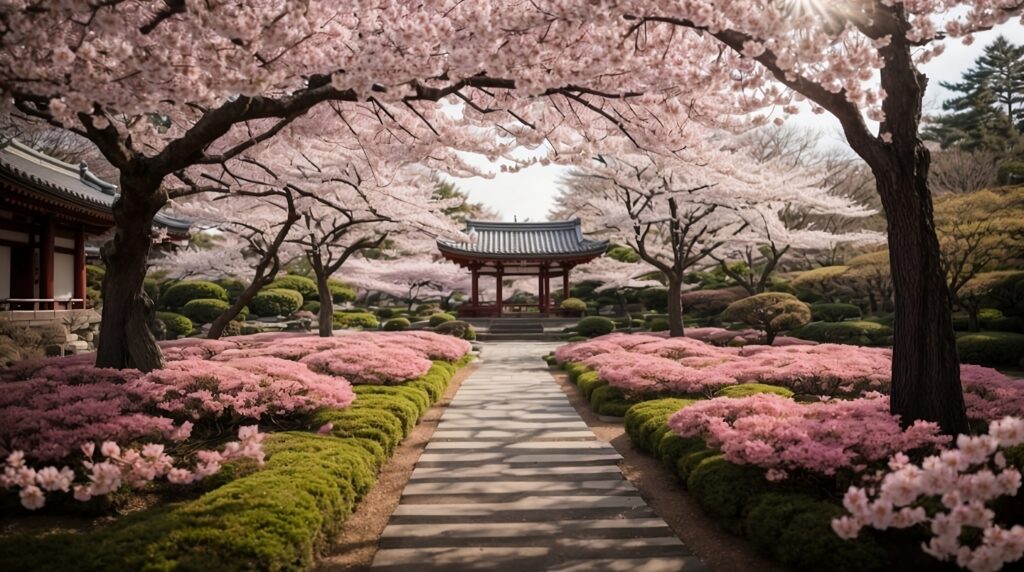
When choosing flowering ornamental trees, color is often a key consideration. You’ll want to consider the various shades from pink and red to yellow and orange, ensuring an eye-catching display throughout your garden.
Pink and red blossoms add a vibrant splash to any garden.
Trees like the Eastern Redbud (Cercis canadensis), native to North America, burst with pink flowers in early spring.
For a similar ornamental effect, the native Serviceberry (Amelanchier spp.) provides beautiful white blooms followed by red berries that support local wildlife.
White and lavender flowers bring a touch of elegance and calmness to the landscape.
The native Flowering Dogwood (Cornus florida) offers white spring blooms and red foliage in the fall.
For lavender tones, consider the native Eastern Redbud (Cercis canadensis), which produces vibrant pink to lavender flowers in early spring.
Another excellent native option is the Texas Mountain Laurel (Sophora secundiflora), known for its fragrant, lavender-colored flower clusters.
Purple and blue tones create a unique and magical effect in the garden.
The native Eastern Redbud (Cercis canadensis) offers striking purple blossoms in early spring.
For blue hues, consider Blue Mistflower (Conoclinium coelestinum), a native perennial with soft, blue-purple blooms that attract pollinators and provide a similar visual appeal.
Yellow and orange flowers add warmth and brightness to the landscape.
The native Tulip Poplar (Liriodendron tulipifera) displays yellow blooms with an orange center in late spring.
For vivid orange tones, consider the native Butterfly Weed (Asclepias tuberosa), which produces clusters of bright orange flowers and supports pollinators like monarch butterflies.
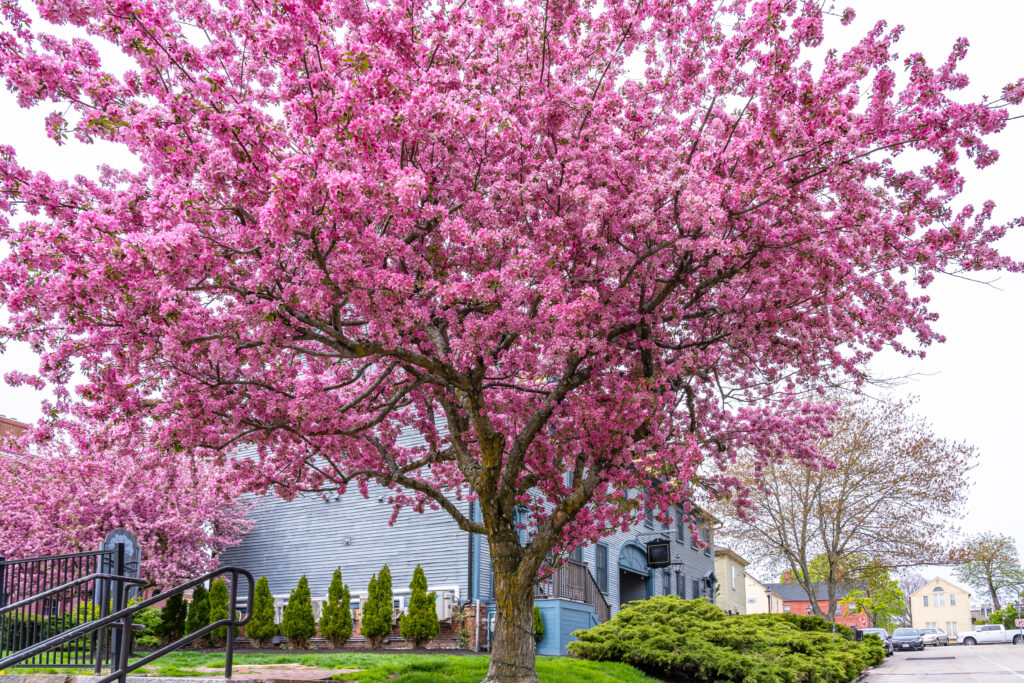
To ensure your flowering ornamental trees thrive, focus on correct planting methods and ongoing maintenance.
Consider low-maintenance options for easier care.
Choose a location with well-drained soil and full sun exposure.
Most flowering ornamental trees prefer slightly acidic to neutral soil pH.
Dig a hole twice as wide as the root ball but just as deep.
Place the tree in the hole, ensuring the root flare is level with the ground.
Backfill the hole with native soil and water thoroughly.
Watering: Water the tree deeply once a week during dry periods in the first growing season.
Mulching: Apply a 2 to 4-inch layer of mulch around the base, but avoid touching the trunk. This helps retain moisture and keeps weeds at bay.
Staking: Stake young trees if they are in a windy area, but remove the stakes after the first year to allow natural tree movement.
Regular maintenance involves watering, mulching, and pruning.
Water established trees during prolonged dry spells.
Pruning: Prune in late winter or early spring. Remove dead or diseased branches and any crossing limbs to improve air circulation.
Fertilizing: Apply a balanced fertilizer in early spring for optimal growth. Follow the fertilizer instructions carefully.
Pest Control: Monitor for pests like aphids or scale insects. Use an insecticidal soap or oil if necessary.
Disease Prevention: To prevent diseases, ensure proper spacing between trees for good air circulation and promptly remove any fallen leaf litter at the base to avoid fungal issues.
If you prefer low-maintenance trees, consider species that require less care.
Examples:
Additional Tips:
Native Alternatives:

When choosing ornamental flowering trees, the region’s climate and soil type are crucial. In North America, different areas support different species based on their specific needs and tolerances.
In North America, the climate varies widely from the northern regions to the southern states.
In the Midwest, such as Indiana (IN) and Kentucky (KY), you might find the Eastern Redbud (Cercis canadensis), which is native and well-adapted to these areas. It provides striking pink flowers in the spring.
In the northeastern states, the Serviceberry (Amelanchier spp.) is a popular choice. It’s also native and offers beautiful white flowers in early spring.
A good native substitute would be the Flowering Dogwood (Cornus florida).
The southern regions, including states like North Carolina (NC), have warmer climates where specific native species thrive.
The Southern Magnolia (Magnolia grandiflora) is a standout native tree, prized for its large white flowers, glossy evergreen leaves, and timeless southern appeal.
For a small to medium-sized native tree, the Red Buckeye (Aesculus pavia) performs well in heat and offers striking red flower clusters that attract hummingbirds.
Another excellent native choice is the American Holly (Ilex opaca), valued for its evergreen foliage and bright red berries that provide year-round interest and support local wildlife.
Northern regions face harsh winters requiring hardier varieties.
The Hawthorn (Crataegus spp.), native to these areas, can tolerate extreme cold and provide clusters of white flowers.
The American Mountain Ash (Sorbus americana) is another good native option, with its white blooms and orange-red berries that attract birds.
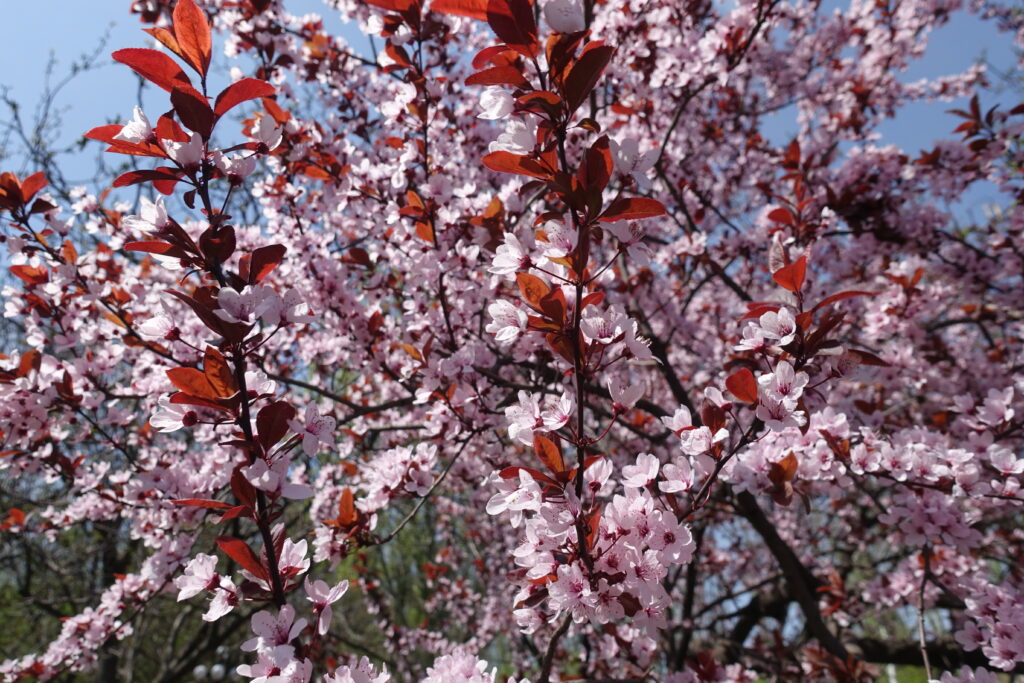
This section addresses common questions about flowering ornamental trees, including recommendations for various garden sizes and climates, plus tips on easy-to-grow varieties.
One of the most beautiful native flowering trees is the Flowering Dogwood (Cornus florida), admired for its elegant white or pink bracts in spring, vibrant red berries, and brilliant fall foliage. It offers year-round beauty and supports local wildlife.
The native Serviceberry (Amelanchier spp.) is an excellent choice for small gardens, offering delicate white spring blossoms, edible berries, and brilliant fall foliage—all in a compact form well-suited to limited spaces.
The native Sweetbay Magnolia (Magnolia virginiana) is a perennial favorite in southeastern landscapes, known for its creamy white, fragrant flowers, glossy foliage, and ability to thrive in moist soils year after year.
The native Eastern Redbud (Cercis canadensis) is a compact tree well-suited for zone 5, offering brilliant pink to lavender blooms in early spring.Another native option is Dwarf Chokecherry (Prunus virginiana ‘Schubert’), which is hardy in colder climates and features fragrant white flowers, dark foliage, and small fruits that attract birds.
While few trees bloom continuously through summer, the native Potentilla (Dasiphora fruticosa), a small, shrubby plant, offers a long-lasting display of bright flowers from late spring through much of the summer. It’s an excellent option for adding consistent color to the landscape.
The Eastern Redbud (Cercis canadensis) is a native tree known for its ease of growth and low-maintenance nature. It adapts well to a variety of soil types and conditions while providing vibrant spring blooms.
Another excellent native option is the Flowering Dogwood (Cornus florida), which is equally manageable and offers stunning seasonal interest with its spring flowers, fall foliage, and red berries.